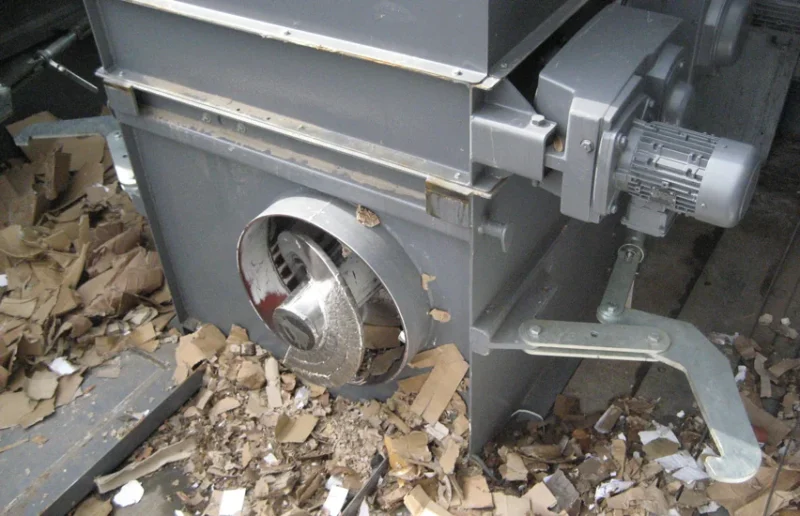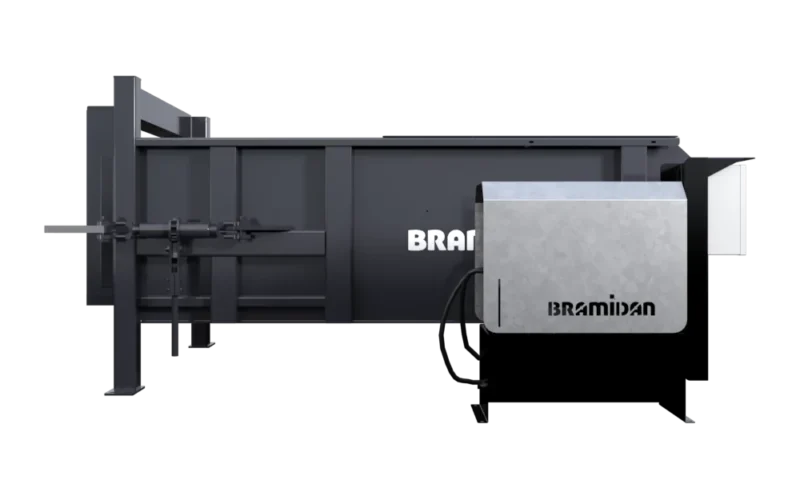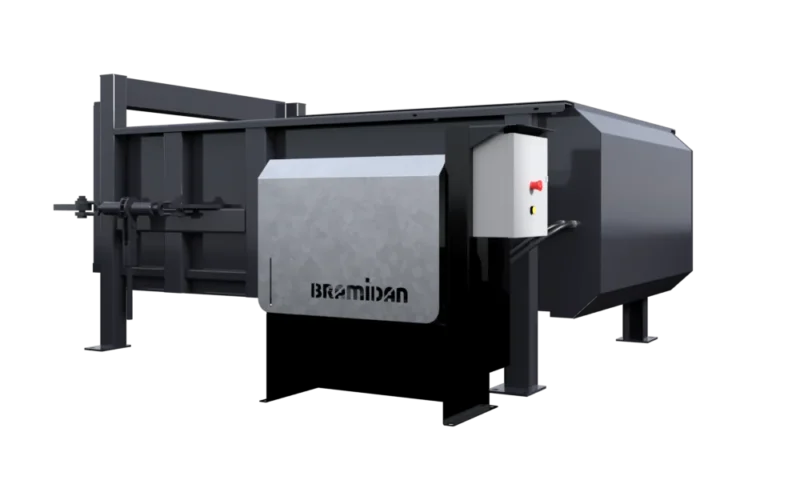STATIONARY COMPACTOR
Bramidan ST 2
STATIONARY COMPACTOR
STATIONARY COMPACTOR
Top Seller for General Waste Management
Our 2-yard stationary compactor is a top seller, compacting waste efficiently into a 40-yard container and powered by a robust 5 horsepower motor.
Durable Construction and Advanced Features
This unit features computer control for reliability and is constructed using high-quality American steel and superior hydraulic components. Available with an extensive range of optional equipment.
2 Yard Stationary Compactor – perfect for general waste:
- 5 HP efficient motor
- Nylatron guides boost durability, extend life
- Low-Noise operation
- No limit switches, less maintenance
- Low-maintenance, computer-optimized compaction
- Alerts include stop button, motor trips
- Hinged teeth secure waste
- Integrated control panel simplifies use
- Load Waste – Open the feed opening and toss waste into the compactor unit.
- Start Compaction – Activate the compactor by pressing the start button. The auger or ram will compact the waste and move it into the attached container.
- Monitor Fill Level – Keep an eye on the fill level indicator. A notification will alert you when the compactor is full.
- Container Exchange – When notified, detach the full container from the compactor.
- Container Pickup – Your waste company will pick up the full container.
- Replace Container – Attach an empty container to the compactor unit to resume operations.

| Press force (lbs) | 55,931 |
| Power supply | 3 x 208 / 230 / 460 VAC |
| Motor (HP) | 5 HP |
| Cycle time avg. (sec) | 56 |
| Feed opening WxH (inch) | 60″ x 44″ |
| Waste volume | Medium |
| Container sizing (cubic yards) | 15-45 |
Monitor & Analyze Your Equipment


Combine our BRA-IN services to fit your needs
In short, the difference between a static compactor and a self-Contained Compactor is whether the press unit stays on-site or if it is attached to and follows the container.
Static compactorA static compactor is designed to stay on-site. The press unit and the container unit are separate units and the press unit is bolted to a concrete base.
The container is attached to the press unit by ratchets. When the container is full, it is picked up for emptying and a replacement container is put into position on the press unit.
The static compactors are very well suited to handle very large amounts of waste and in situations where the is a need for constant filling.
Self-Contained Compactor
In a Self-Contained Compactor, the press unit is integrated with the container. This means that the entire unit is picked up for emptying when it is full.
The Self-Contained Compactor is often slightly smaller and have less capacity than a static compactor, because it must be easy to pick up and transport on a truck.
The Self-Contained Compactor is suitable for applications where space is confined. They can handle a wide range of waste materials including cardboard, paper, plastic, combustible waste or organic waste.
The difference between a static compactor and a Self-Contained Compactors is whether the press unit stays on-site or if it is attached to the container.
A static compactor consists of two separate units – the press unit and the container unit. The press unit is bolted to a concrete base and stays on on-site.
In a Self-Contained Compactors, the press unit is integrated with the container. This means that both the container and the press unit is picked up for emptying.
It is possible to integrate your static or screw compactor with the building, e.g., with a wall hopper that enables feeding from inside directly into the compactor through the wall. This can be an advantage if you generate a lot of your waste inside. With a wall hopper, you can streamline your waste handling by eliminating having to go outside to dispose your waste into the compactor.
Reach out to one of our consultants if you want to hear more about making your waste handling more efficient.
Fill in the form and we will contact you
Questions? Contact Us Today





